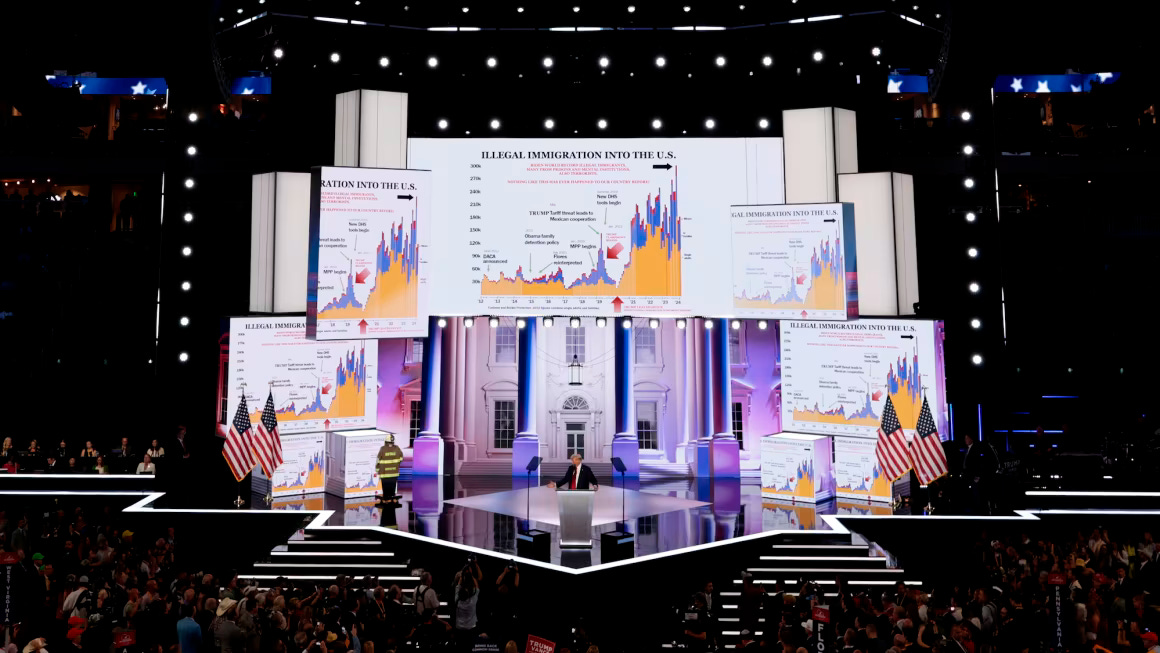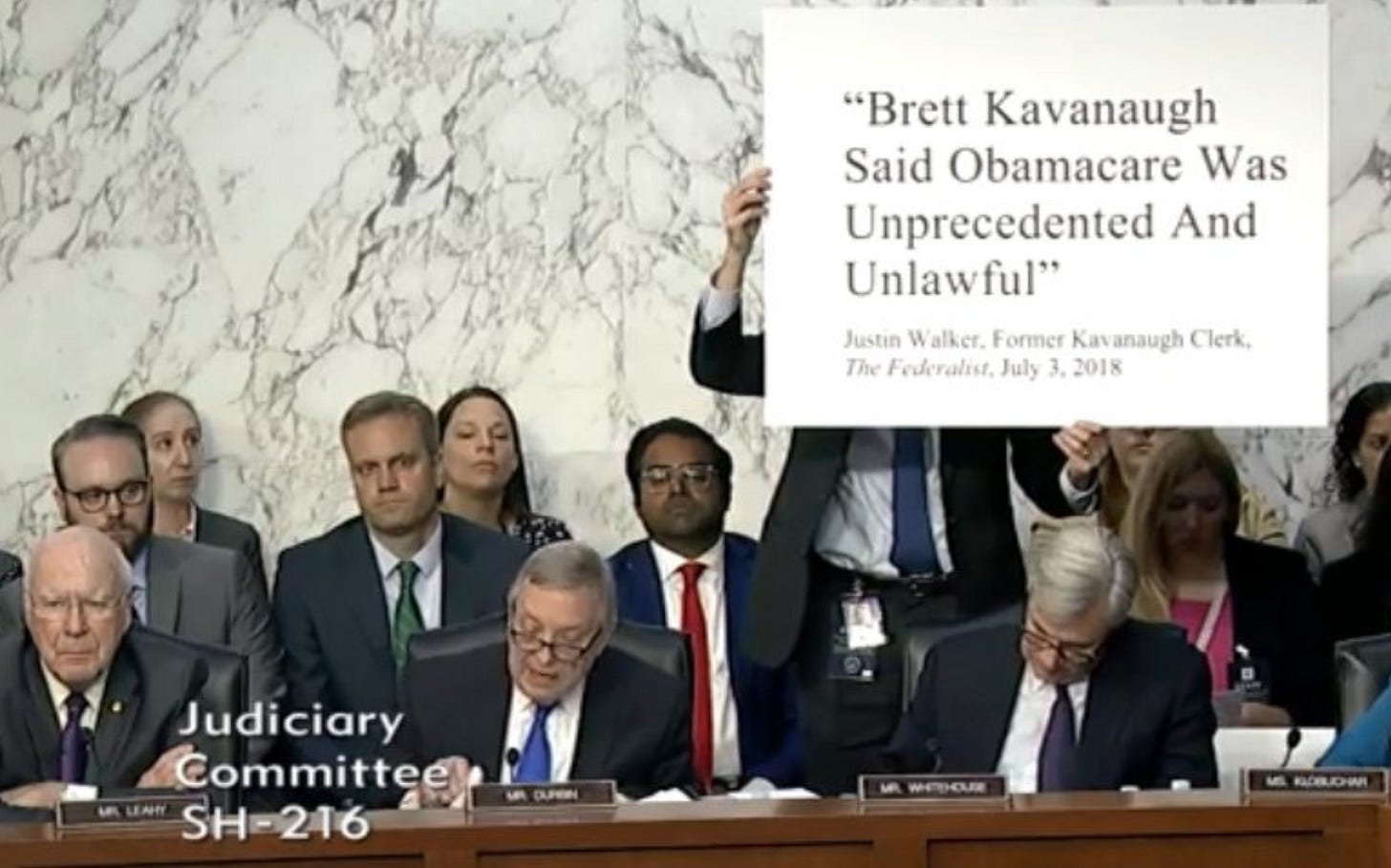All the Frequently Asked Questions about Charts and Congress
Everything you ever wanted to know about the charts you pay for and your government uses to get your attention.
I’ve been archiving, tweeting, and making noise about Congressional charts, props, and posters since 2012. It all started thanks to a late-night Twitter discussion by Niels Lesniewski and Elise Foley (more here in Roll Call) and government trying to regulate 5-hour Energy Drinks.
Which inevitably leads people to regularly ask:
What the heck is Congress doing with giant posters on TV?
A lot. But in short: They’re trying to get your attention, end up in news stories, honor constituents and their lives and achievements, and much, much more. But here is what they all have in common:
You are paying for them.
And that leads us to:
FAQ Number 1: How much do these charts and posters cost?
Answer: It depends. Typically the prices vary from $20 to $100, depending upon quality, re-use of poster board, in-house printing versus out of house printing, and more. That, of course, does not take into account staff time, design time, etc. Consider, for example, the now infamous immigration chart created by Senator Ron Johnson (R-WI) and his staff that was literally featured center stage at the 2024 Republican National Convention (and that President Trump credits with saving his life).
Now, $20 does not sound like much, but consider that in January and February of 2025 alone, I’ve archived more than 550 unique charts, props, and posters by the U.S. House and Senate (I know, I’m way behind on the archiving, I’m getting to it!). So let’s say the average chart is $50 - what is 550 x $50? $27,500.
Congress has spent at least $27,500 in the first two months on printing charts, props, and posters, sticking them on easels (or making staff hold them up) and giving speeches about them. Admittedly, this is napkin math, because there is no line item in the office budgets for “printed charts, props, and posters.”
FAQ Number 2: Where do they print these? Does the government have an in-house printing office?
Answer: Yes, Congress prints many, many charts in-house. There’s an entire C-SPAN archival segment from the 1990s about congressional chart making. (I can literally hear her keyboard clacking.) Heck, NPR tried to get access to the chart making process and were rebuffed, unfortunately for all the nerds reading this.
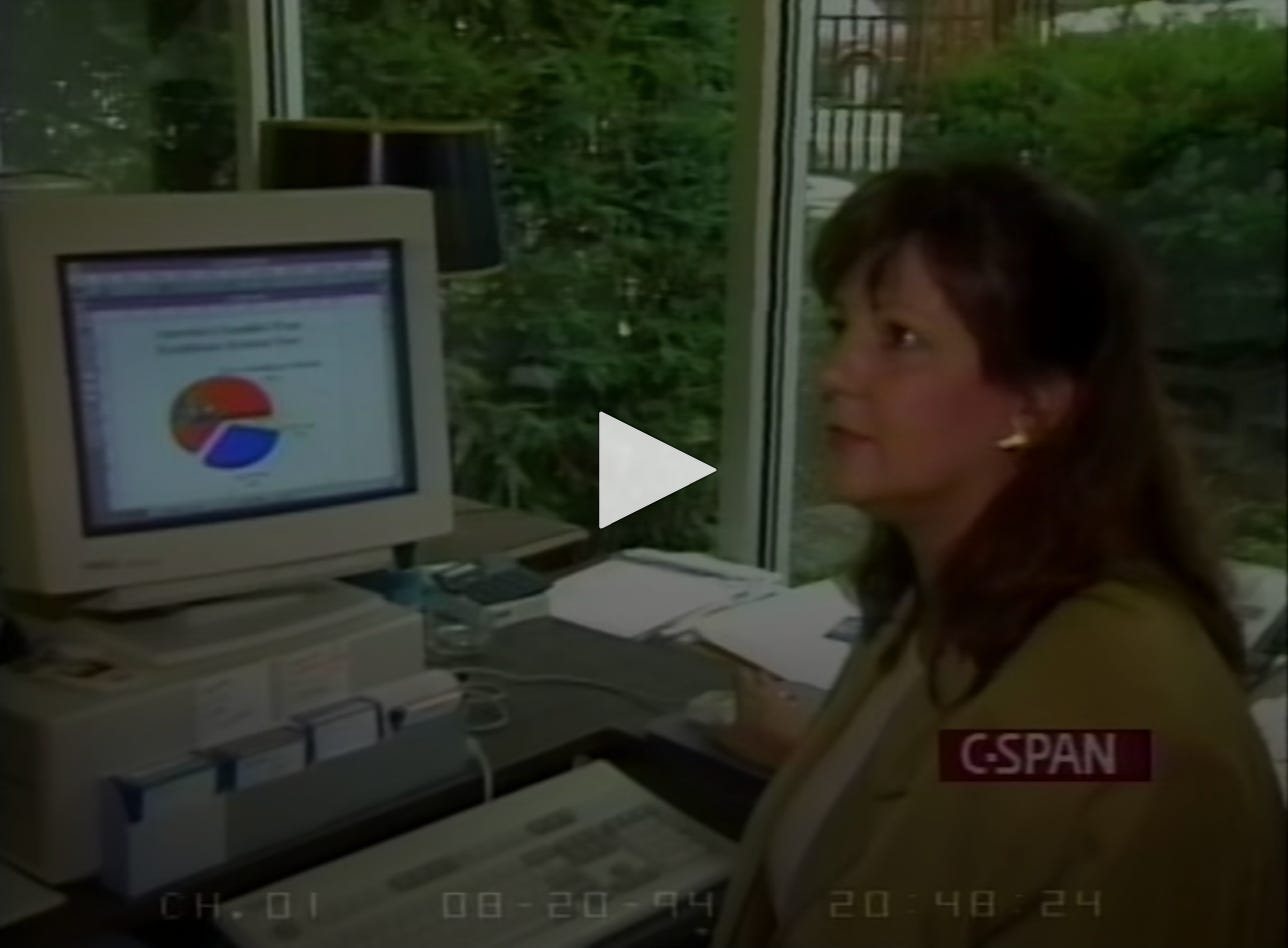
But members of Congress also use local and chain printers, particularly when they are traveling around their districts or want to continue highlighting a particular item while on the road. I’ve also been told they ask staff to package and ship them, as well.
I haven’t yet had access to the congressional chart making offices, nor have I interviewed staff who work there, but I’d love to if you know anyone!
But let’s also remember that we live in a digital era. So many members of Congress and committees have iPads or other tablets, laptops, phones and more: So why are we still printing posters and holding them up in committees?
Because the attention.
FAQ Number 3: Can’t they just use Power Point?
Answer: YES. Yes they can! Congress has proven time and time again that they can insert visuals (images, slides, videos) directly into the feed that is picked up by the news networks and online streaming platforms. Avid C-SPAN watchers will remember the hours of images that accompanied the impeachment trial of President Trump following January 6, 2021.
What you’re looking at below is an image inserted directly into the feed that C-SPAN carried and broadcast and eventually archived online.
Now, Congress has also literally wheeled in televisions to show clips and commercials, but we’re far beyond needing that now!
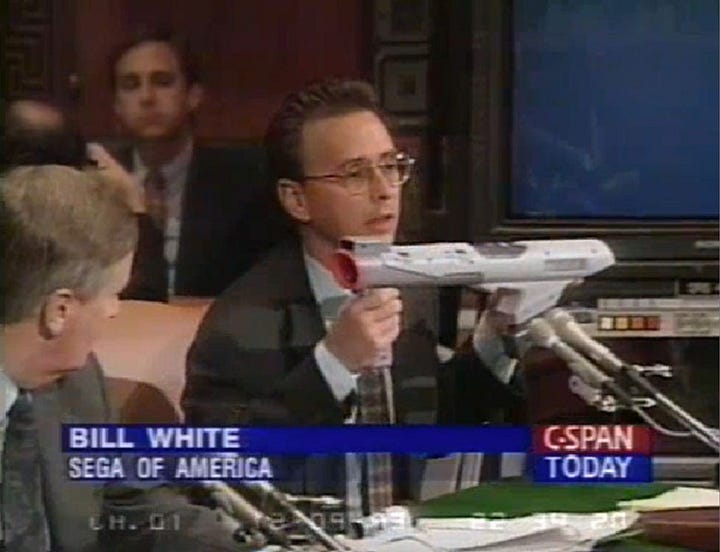

Yes, there will be trade-offs and complications related to syncing speakers and slides (rather than propping a poster board on an easel during a one-minute on the House floor). But you’d also get rid of that nasty glare that accompanies so many charts in Congress, particularly in the U.S. Senate.
Imagine how frustrating it is as a staff member to print a chart only to literally be unable to see it on TV? Waste of time, waste of money, and frustration across the board.
FAQ Number 4: Okay, so they print a lot of charts. But what happens to them when they’re done?
Answer: When a chart’s time has passed (RIP), a few things happen:
Staff occasionally take their favorite charts and pet projects home, especially when they might leave the office for new opportunities.
Fans will snag them - like yours truly, when I used to have a dozen or so stashed in my apartment closet.
They’re thrown in the trash. (You can see photos of this on Twitter during move-out days.)
They’re donated to a historical archive of some kind.
The member keeps them and takes them when they retire from office, lose re-election, etc.
Some committees rip the paper off and re-use the poster board (or back of the chart) repeatedly.

FAQ Number 5: Who uses more charts - Republicans or Democrats?
Answer: It’s actually really close. Though it varies by year, so far in the first two months of 2025 I’ve archived, Republicans have used about 20 more charts than Democrats. Because these are largely messaging vehicles (aiming to get your attention and keep it), typically the minority party in Congress uses props and posters more often - because they fundamentally have less power to pass laws, schedule hearings, and generally move the levers of government.
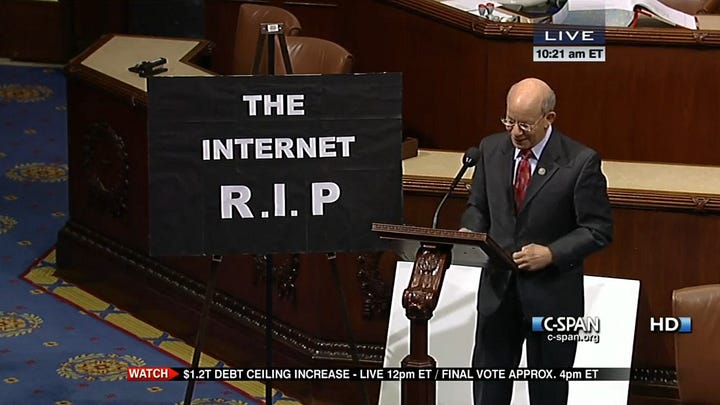

FAQ Number 6: When did Congress start using charts anyway?
Answer: Thanks to historian David McCullough and FloorCharts fan, we know that even in 1902, Congress was using maps, charts, and posters to make their point to their fellow members and the press.
To quote: “The chamber was nearly full and all about were hung enormous maps and plans. One map of Central America and the Caribbean islands reached from the gallery railing to the floor.” (emphasis mine)
So: More than a century, at least!
FAQ Number 7: Who controls the cameras anyway?
Answer: Okay, I am cheating a little because this is a general question I end up getting by nature of watching C-SPAN all the time. C-SPAN does not control the cameras on the House and Senate floor that regularly broadcast what you see on the networks in the form of floor debates, votes, and other activity specifically on the House and Senate floors.
The network has, historically, sent requests to leadership to be allowed to install additional cameras in the chambers to further augment what is already broadcast by Congress. Likewise, they’ve campaigned for access to put cameras in the U.S. Supreme Court (you can find more here), as well.
Lest you think it is all about Congress: C-SPAN has also asked the likes of YouTube TV and Hulu to carry C-SPAN, C-SPAN 2, and C-SPAN 3 but so far, the doors have been closed to those discussions.
In short: You pay for the charts, props, and posters, and so much more. I would not be able to archive all of this without C-SPAN, and we would not be able to see more of the inner workings of our government without the network, either. But they control only what they are allowed to, and what you see, where, is often decided by somebody else.
So, in the end: Support C-SPAN, buy some merch or swag, download the app, and make up your own mind.
I’ll add more frequently asked questions here as I receive them. For those who don’t know, I post all charts I find here http://www.floorcharts.com and tweet regularly @FloorCharts.
More soon!




